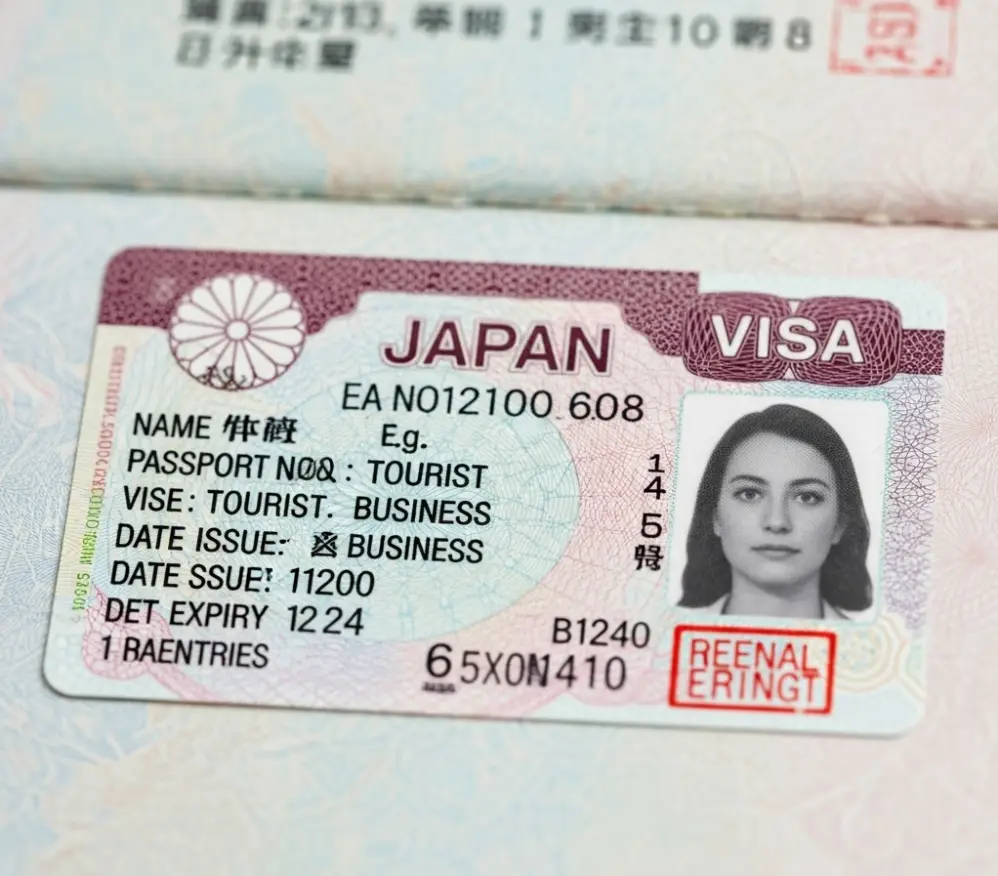Starting a New Chapter in Japan

This guide is designed to make finances in Japan for new residents easy to understand, especially if you’re in your 40s, 50s, or 60s. Moving here isn’t just about geography—it’s about reinventing your lifestyle. Whether you’re pursuing a late-career opportunity, joining family, or realizing your dream of retiring in Japan, your financial setup plays a huge role in making the transition successful.
Japan is a country of contrasts: futuristic technology coexists with centuries-old traditions, cash is still king in many places, and yet digital banking options are rapidly growing. Understanding these nuances can make your adjustment smoother and help you avoid costly mistakes.
From my perspective as someone who has worked with foreign employees at my English conversation school for 20 years, I’ve seen firsthand how confusing Japan’s financial system can seem at first. One of my Canadian staff once said, “I thought Japan was high-tech in every way—then I realized I needed a stamp (hanko) just to open a bank account!” Another, from the UK, was relieved to discover digital options like Sony Bank: “Finally, an English-language interface I can actually use without Google Translate!”
This guide brings together those real-life experiences with Japanese insights, so you can confidently build your financial foundation in Japan.
1. Managing Finances in Japan for Expats: Bank Setup
Why It Matters
Opening a bank account is the first step in managing finances in Japan for new residents. A bank account isn’t optional here—it’s essential. You’ll need it for:
- Paying rent and utilities
- Receiving salary or pension transfers
- Setting up mobile phone or internet contracts
Required Documents for New Residents




Most banks will ask for:
- Passport
- Residence Card (Zairyū Card)
- Proof of address (utility bill or Residence Card)
- Japanese phone number
- My Number card/notification
- Hanko (personal seal)—though some banks now accept signatures
Choosing the Right Bank
Foreigner-friendly banks:
- SBI Shinsei Bank – English support, low transfer fees
- Sony Bank – user-friendly app and English interface
Traditional option:
- Japan Post Bank – available everywhere, but online banking is limited
Employee story:
One of my American teachers struggled for weeks trying to open an account at a major Japanese bank, only to be rejected for “not having enough history.” She switched to Shinsei Bank and walked out with an account the same day. Moral? Sometimes, choosing a foreigner-friendly bank saves you time and stress.
2. Money Transfers in Japan for Immigrants
One of the biggest concerns about finances in Japan for new residents is how to transfer money safely and affordably. Once your Japanese bank account is ready, you’ll need to bring funds over—whether for rent deposits, daily living, or even retirement savings.
Options for Transfers
- International Bank Transfer (SWIFT): reliable but often slow and expensive.
- Online Services for New Residents (Recommended):
- Wise : transparent fees, strong exchange rates
- Revolut: app-based banking and transfers
- OFX: good for larger international transfers
- WorldRemit: ideal for smaller transfers to family or personal accounts
When my UK employee sent her savings over, she saved nearly ¥30,000 (about $200) in fees on one transfer by switching from her home bank to Wise. If you’re planning to bring over retirement funds or a house deposit, even small percentage savings add up quickly.
3. Finances in Japan for New Residents: Daily Banking & Payments
Why Cash Still Matters
- Restaurants, clinics, and small shops often only accept cash.
- ATMs at convenience stores (7-Eleven, Lawson) are your lifeline.
But Things Are Changing
Even in Niigata, where I live, the number of clinics and dental offices that accept cards or digital payments has grown in recent years.
Cards and Digital Payments for New Residents
- Credit cards: Harder to get as a newcomer. Rakuten Card is often the easiest, and Rakuten has begun offering English-friendly support.
- E-Money / QR Codes:
- PayPay is widely accepted and offers an English interface.
- Suica doubles as both a transport IC card and a convenient e-money option at shops, vending machines, and convenience stores.
- Rakuten Pay integrates with the Rakuten ecosystem, though most of its support pages are in Japanese.
💡 Tip: Always carry at least ¥10,000 (about $65) in cash. Even in big cities, you may run into places that don’t take cards or apps—like small restaurants, temples, or older clinics.
4. Understanding Japanese Taxes as a New Resident
Taxes are a major part of finances in Japan for new residents, especially if you have income abroad.
Residency Status and Tax Obligations
- Non-resident: Tax only on Japan-sourced income.
- Non-permanent resident: Taxed on Japanese income + remitted foreign income.
- Permanent resident: Taxed on worldwide income.
When to File Kakutei Shinkoku (Annual Return)
- Income Tax: Progressive, usually deducted from salary by your employer. If you’re self-employed, have multiple income sources, or want to claim deductions, you’ll need to file a final return through kakutei shinkoku (Japan’s annual income tax return). This filing period runs from mid-February to mid-March each year. I’ll share a full step-by-step guide to kakutei shinkoku in a future article.
- Residence Tax: Around 10% of income, charged by your local municipality, and starting in your second year in Japan.
- Consumption Tax: Currently 10%, included in goods and services.
Finding a Zeirishi (Tax Accountant)
Foreigners often find a zeirishi through:
- City or ward offices (many keep bilingual lists)
- Referrals from HR or expat colleagues
- Expat communities and Facebook groups
- International accounting firms in major cities
💡 Tip: “If you’re looking for a zeirishi, start with your city hall or ask other expats—many of us found ours through word of mouth.”
5. Investing and Saving in Japan for New Residents
Savings Accounts vs Investments
Low Interest Rates
Savings accounts in Japan have near-zero growth—useful for transactions, not wealth-building.
NISA, iDeCo, and Other Options
- NISA: Tax-free investments in stocks or funds.
- iDeCo: Retirement savings with tax deductions (funds locked until age 60).
- Online brokers like Rakuten Securities or SBI Securities provide wider access.
👉 These deserve their own article. I’ll cover NISA, iDeCo, and investment options for expats in detail in a future blog post.
Pensions and Social Security Agreements
You’ll likely pay into the National Pension or Employees’ Pension Insurance. Since pensions can feel complicated for immigrants, I’ll cover this in a dedicated article soon.
Free or Affordable Ways to Learn About Taxes & Retirement
If you’d like to explore before hiring a professional, here are some resources:
- National Tax Agency (NTA) – official, free in English
- Local international centers – many offer free tax info sessions
- Udemy Japan – affordable courses on finance (affiliate potential)
- Amazon Japan – finance/retirement books (affiliate potential via Amazon Associates)
One of my South African colleagues in her 50s admitted she was overwhelmed at first. But once she had her bank account and health insurance sorted, she told me she felt an unexpected sense of relief:
“I thought it would be impossible to set up financially here at my age. But Japan really does make things work smoothly if you follow the system.”
These small victories matter. And they build the confidence you’ll need for the long-term financial journey ahead.
Niigata Seasons: A Personal Reflection
Niigata, where I live, is a place where you can truly feel the seasons. When I was younger, I barely noticed. But now, in my fifties, I find myself moved by the simple beauty of change—the sound of insects on a summer night, the cool breath of autumn wind, the trees glowing red and gold.
The seasons remind me to pause, to appreciate, and to be grateful for this new chapter of life. I hope you’ll find your own rhythm here, too.
Recommended Resource Box
👉 For secure, low-cost international transfers to Japan, I recommend Wise. It’s what many of my foreign employees use, and it consistently beats bank rates.
Conclusion: Your Financial Journey in Japan
With the basics of finances in Japan for new residents in place, you’ll be free to focus on enjoying your new life. While settling your finances may feel intimidating at first, once you get past the initial hurdles, life here quickly becomes not only manageable but deeply rewarding.
My advice?
- Secure your bank account.
- Choose smart money transfer methods.
- Learn Japan’s payment habits.
- Get professional advice on taxes and retirement.
With those foundations, you’ll have the freedom to enjoy Japan’s safety, culture, and community.
A warm invitation: Wherever you’re starting from—retirement dreams, late-career moves, or family reunions—Japan can welcome you. I hope this guide helps you feel at home financially, so you can focus on building a meaningful new life here.
Welcome, and best of luck on your journey! 🌸
Further Reading
📩 Free 7-Step Guide to Starting Your New Life in Japan
Inside, you’ll discover:
✅ How to handle visas, finances, and banking without stress
✅ What you need for healthcare, insurance, and everyday logistics
✅ Practical steps for housing, cultural adaptation, and daily life
✅ How to build community and feel at home in Japan
✅ Personal tips I’ve learned from my own journey—and from foreign colleagues who’ve done it too
👇Click here to sign up and get your 7-Step Guide delivered straight to your inbox.
Download the Free 7-Step Japan Move Checklist!
Enter your email below, and I’ll send it straight to your inbox.
Thank you!
You have successfully joined our subscriber list.

